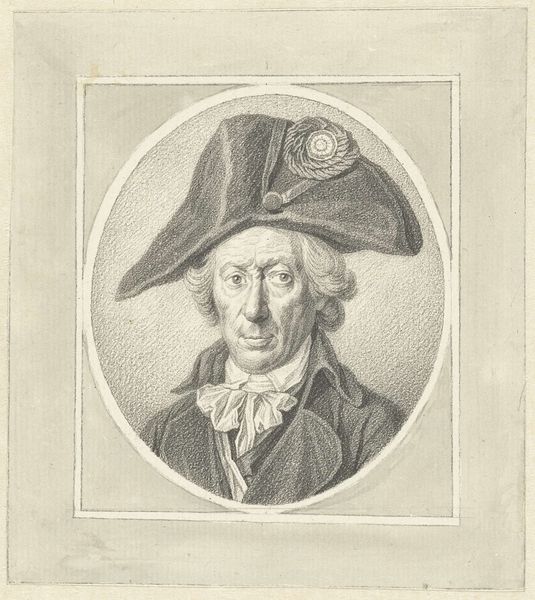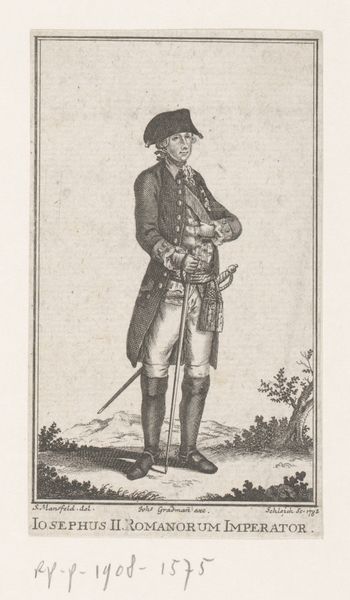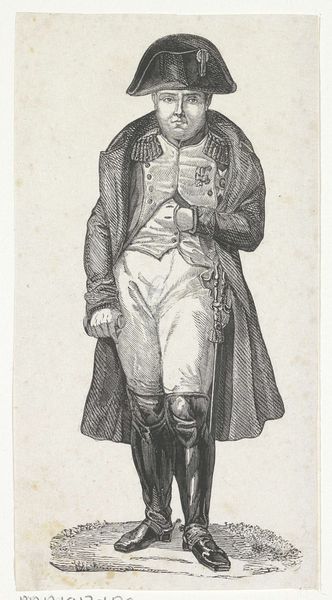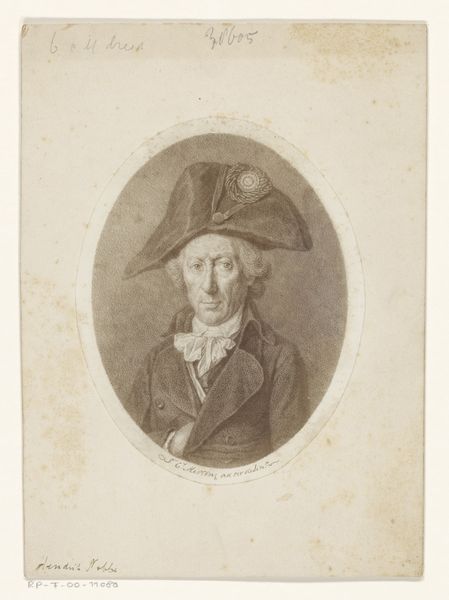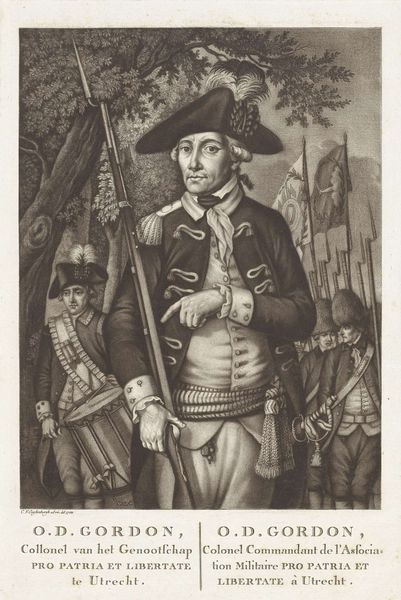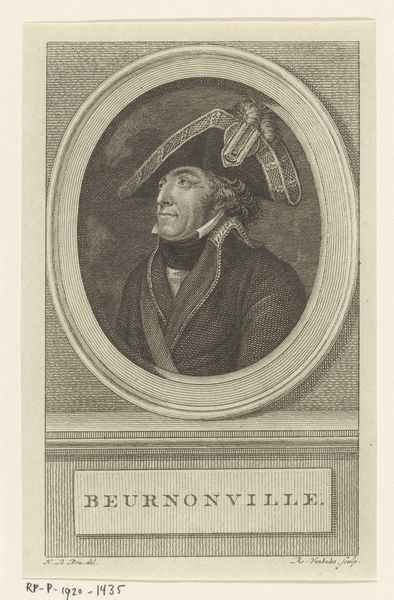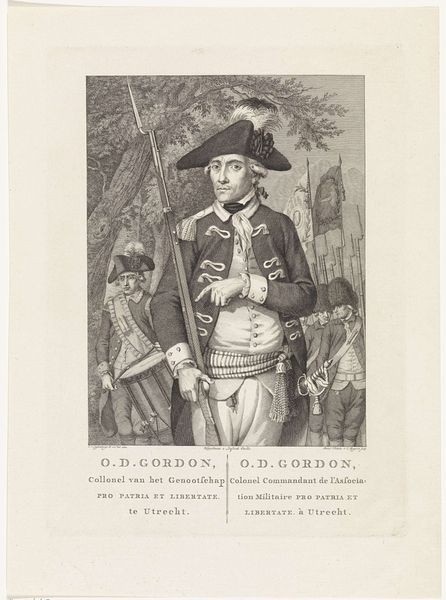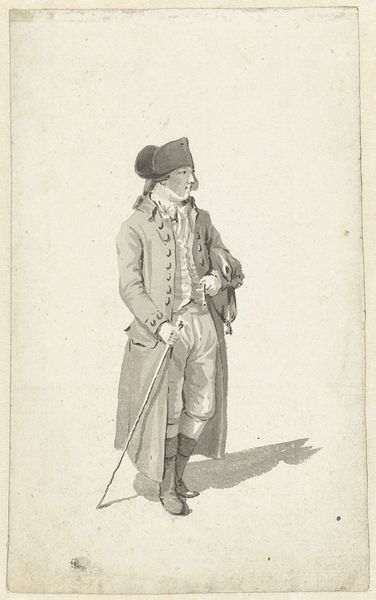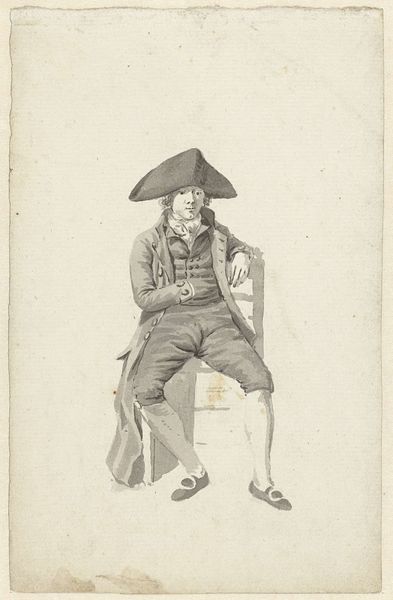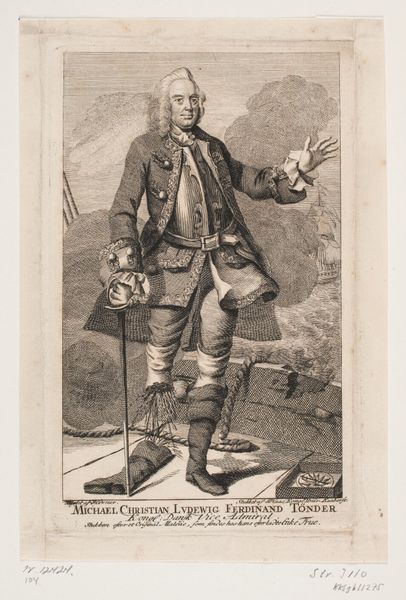
drawing, ink
#
portrait
#
pencil drawn
#
drawing
#
pencil sketch
#
ink
#
pencil drawing
#
portrait drawing
#
pencil work
#
history-painting
Dimensions: height 160 mm, width 120 mm
Copyright: Rijks Museum: Open Domain
Curator: This is a portrait of Lieutenant Colonel Benjamin Roelofswaard by Ernst Willem Jan Bagelaar, created sometime between 1798 and 1837 using ink and pencil. What strikes you initially? Editor: The most immediate impression is one of controlled power. His gaze is steady, but the stark linework lends it an air of somber seriousness. He seems weighed down by responsibility. Curator: Considering its historical context, that interpretation resonates. Remember the late 18th and early 19th centuries were a time of immense social and political upheaval. Roelofswaard, as a military figure, was navigating complex power structures. Does this influence your perspective on the portrait? Editor: Absolutely. The military uniform, particularly the elaborate hat, speaks to his status. Yet, looking closer, you see the delicacy of the drawing itself – the fine lines seem almost fragile in contrast to the rigid military image. It suggests a vulnerable humanity beneath the public persona, doesn’t it? Curator: Indeed. Bagelaar's choice of medium becomes quite potent in revealing these multiple layers. The deliberate details—from the cross-hatching shading to the feather—create a nuanced study. How do you see the portrait engaging with the visual culture and the construction of masculinity in the late 18th, early 19th century? Editor: That is interesting to consider. He isn't idealized; there is a directness that resists embellishment. This choice, within the portrait tradition, points to the social values and political anxieties present during the transition of power in that era. The lack of idealization challenges the prevailing narratives surrounding male authority. Curator: I agree. Its art historical importance stems from that ability to give a realistic look at power through detailed observation. Editor: Seeing how that era shaped not only portraiture, but also its subjects, offers us valuable insights on the visual presentation of military elite and social constructs that built modern state power. Curator: Thank you. I leave contemplating how social structures influenced how people are depicted in that historical period.
Comments
No comments
Be the first to comment and join the conversation on the ultimate creative platform.

